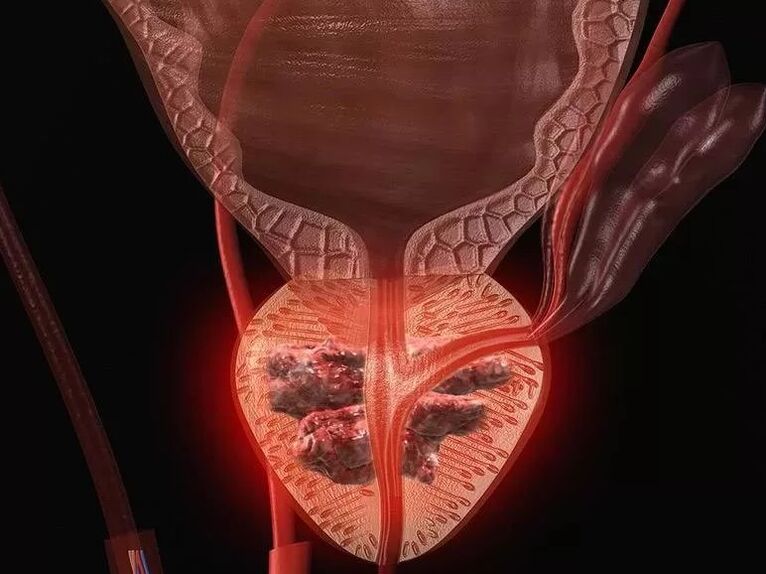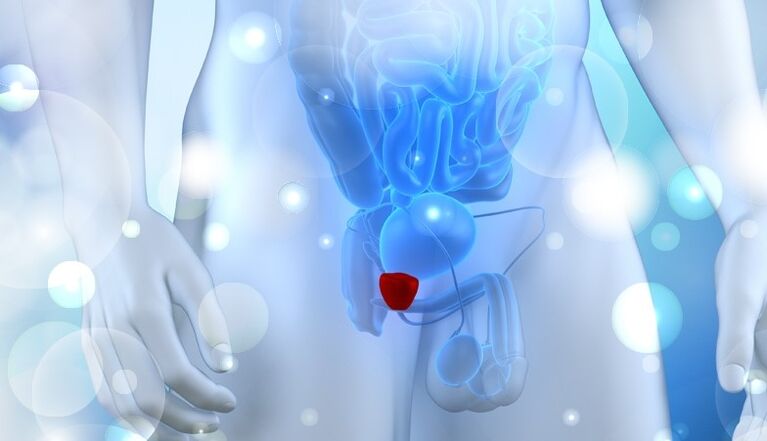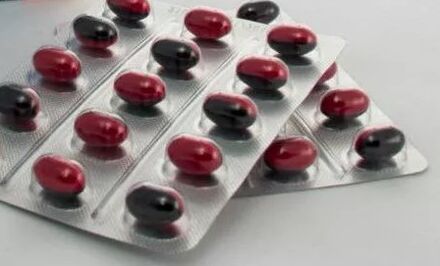One of the most dangerous complications of acute prostatitis may be an abscess in the prostate. This is a focal suppurative inflammation at which the local temperature can rise to 40 degrees. Signs of an abscess are acute intensity pain and difficulty urinating. In the absence of health care, swelling of the gland tissue occurs and the urethral lumen is completely blocked.

Prostatitis is the most common urology pathology in males of reproductive age. According to polls, they experience symptoms at least every third of their lives, which can be explained as inflammation of the prostate. The main reason for the development of bacterial prostatitis is infection, but only in the case of acute prostatitis, infection can lead to sharp inflammation of the prostate, which is explained by the anatomical characteristics of the male body structure.
In the chronic form of prostatitis, infection may also be the cause of inflammation’s triggering mechanism, but inflammation of the prostate that needs treatment can only develop in the context of other factors:
- Long-term hypothermia: it can be bathed in an ice cave or sit on a cold stone.
- A long-sitting (sitting) lifestyle causes blood stagnation, which can also cause inflammation;
- Irregular sex: This refers to both excessive and excessive activity abstaining from alcohol;
- Metastatic urology (such as urethritis) or sexually transmitted (gonorrhea, chlamydia, etc. ) diseases: These diseases are also hidden, and the result becomes prostatitis;
- routine problems with feces (usually chronic constipation);
- Using spicy, smoked and pickled foods, alcohol and other products can also cause prostatitis
- Other factors that cause impaired immunity: excessive loading, multiple or long stress.
Prostatitis: Consequences
If the urologist is not attracted in time, acute bacterial prostatitis can lead to abscesses and edema that form the prostate, which not only complicates urination, but also makes it completely impossible.
The latter, like inflammation, can cause severe intoxication in the body, and among other things, the temperature rises sharply to 40-41°C (the temperature fluctuates sharply within 1 degree).
However, because the manifestations of prostatitis in this species usually force patients not to postpone visits to experts, this complication can be avoided.
In the case of chronic disease forms, the symptoms are not so obvious, so the development of complications without proper and timely treatment is likely. Without proper medication and therapeutic effects, inflammation can spread to other organs of the urogenital system, which can lead to development:
- Cystitis - cystitis;
- Pyelonephritis - kidney inflammation;
- Vesicitis - inflammation of seed bubbles;
- Inflammation of the testicles and appendages of the testicles.

It must be remembered that inflammation of the egg and testicles is one of the most common complications that can lead to male infertility, which has been treated for a long time, is difficult and not always successful, so the faster the treatment of prostatitis, the more chances of avoiding such complications.
In some cases, the consequence of chronic prostatitis may be its transition to a calculus form. The characteristic of calculation of prostatitis is that bones (pebbles) are formed in the excavation catheter of the gland to eliminate this is very drug-free.
In addition, prostatitis is caused by hormone failure caused by a hormone.
The development of prostatitis is facilitated by a variety of reasons. Typically, signs of prostatitis are manifested in men who have irregular sexual life that are often affected by hypothermia and harm.
In addition, due to hormone failure, the male immunity of the male in the small pelvis of the man, the worsening of blood flow and the decrease in lymph circulation, prostatitis may lead to hormone failure, which can cause a certain degree of hermaphrodite failure.
One factor that causes the manifestation of prostatitis is also considered a multi-sexually transmitted infection. Therefore, prostatitis usually occurs in men after unprotected sexual intercourse.
There are 4 main forms of prostatitis: acute bacterial prostatitis, chronic bacterial prostatitis, non-bacterial prostatitis and prostatitis.
In people under 35, the disease is usually performed in the form of acute bacterial prostatitis. When the laboratory confirms the presence of the infection, it is called bacterial prostatitis.
Most commonly, it turns out to be chlamydia, maurodyosis, gardnerellisosic or Gonorrhea. The infection passes through the blood and lymphatic vessels of the pelvis to enter the prostate from the urethra, bladder, and rectum.

However, recent studies have shown that in most cases, infection is based on existing interferences in the prostate tissue structure and blood circulation in it. For non-bacterial prostatitis, bacteria cannot be isolated, although this does not rule out its existence.
In older patients, chronic forms of the disease are often diagnosed. The prostate vein is a clinical picture of prostatitis, which is a seal of prostate tissue and shows no signs of inflammation.
Classification
According to the National Institutes of Health (NIH USA), there were four types of prostatitis in 1995:
- Acute (bacterial) prostatitis
- Chronic bacterial prostatitis
- Chronic nonbacterial prostatitis/chronic pelvic pain (CP/CPP)
- Inflammatory chronic pelvic pain syndrome (white blood cells are identified in the secrets of prostate, urine, and ejaculation)
- Non-inflammatory chronic pelvic pain syndrome in which there are no signs of inflammation
- Asymptomatic chronic prostatitis
Currently, the International Classification of Prostatitis has been adopted, which is the most complete, covering all types of inflammation:
- Class I acute prostatitis;
- Category II. Chronic prostatitis bacteria;
- Category III Chronic Prostatitis/Chronic Pelvic Pain Syndrome is a disease in which no infection lasting more than 3 months was detected;
Subclass of chronic inflammatory pelvic pain III A. syndrome (white blood cells are identified in the secret of the prostate);
Subcategory III B. Syndrome of chronic non-inflammatory pelvic pain (there are no white blood cells in the secret of the prostate); - Category IV chronic prostatitis (the secret of white blood cells present in the prostate, the patient did not complain and accidentally detected the disease).
What form of treatment for prostatitis occurs due to a disease that occurs in men. Therefore, bacterial prostatitis can occur in acute forms and in chronic diseases.
Often, nonbacterial prostatitis is also diagnosed as a chronic disease. This variety of prostatitis is also known as a syndrome of chronic pelvic pain.
In such patients, characteristics of all symptoms were observed, but there were no bacteria in the prostate secret.
Acute bacterial prostatitis is characterized by rapid development. At the same time, a person suffers from severe pain and shows signs of general poisoning. The symptoms of chronic forms of the disease are much clearer. In this case, the disease gradually manifests.
Furthermore, if the acute form of prostatitis progresses usually end with complete recovery of the disease, recurrence often occurs in the case of chronic prostatitis. This should be considered for the treatment of prostatitis at home. In addition, in the presence of inflamed stones in the prostate, the treatment of the disease is a more complicated process.

Due to nonbacterial prostatitis (chronic pelvic pain), a person experiences severe pain that is located in the pelvic area, the genitals and the perineum. There is no sign of inflammation in the prostate.
This disease is common in modern men of different ages, but most diseases affect people aged 35-45. Until today, experts have expressed several hypotheses about the causes of this form of prostatitis.
Therefore, there is a theory that the syndrome triggers damage to bacterial prostate tissue. Furthermore, it is believed that the disease manifests itself as a result of urine falling into the prostate.
As we have already said, the acute and chronic course of the disease is possible. In this case, the emergence of acute prostatitis is usually caused by Gram-negative bacteria.
This form of the disease is relatively easy to diagnose and treat antibiotics. At the same time, cases of chronic nonbacterial prostatitis are often found in men, which is more difficult to diagnose and has nothing to do with certain infectious lesions.
Therefore, in the case of chronic prostatitis, antibiotic treatment will not be able to give appropriate effects. According to statistics, about 35% of men aged 50 have chronic prostatitis.
Treatment of chronic prostatitis
In the case of signs of prostatitis in acute and chronic diseases, you should consult a urologist who will determine what kind of diagnosis is happening and also helps heal the disease and strengthen the entire body. It should be remembered that this also applies to two types of prostatitis, each of which causes its complications.
Main Receive
The primary reception of experts involves investigations and examinations of patients (including rectum, which allows you to determine the extent and nature of prostate increase), as well as appointments for necessary tests and other diagnostic measures.
The first important sign of prostatitis is damage to urine, which leads to discomfort. Another sign of the disease is rapid urination, but a small portion of the urine appears.
Acute form of disease symptoms

The disease suddenly forms and is characterized by obvious manifestations.
- Urination with frequent pain;
- Pain during bowel movements;
- Impaired efficacy;
- Groin pain, ac bone area and anus;
- High sweat;
- fatigue.
Every male body is an individual and symptoms can be manifested individually or in all.
Signs of chronic disease
Chronic prostatitis is usually characterized by the same signs, but its symptoms are less obvious.
In addition, the following behaviors can be observed:
- Increase troubles;
- A feeling full of bladder;
- deterioration in quality or lack of orgasm;
- Choice during bowel movement from the urethra.
The first sign of prostatitis, a person should definitely pay attention and contact a urologist:
- Severe pain during urination. At the end of the process, an unpleasant burning feeling was felt.
- Improve body temperature.
- The feeling of not completely clearing the bladder.
- Crot and groin area discomfort.
- When visiting the toilet, the jets are underpressed.
The treatment of prostatitis depends on the form of the disease. Acute inflammation is an indication of hospitalization for patients in urology hospitals, and chronic patients are treated at home. If the cause of the disease is a sexually transmitted infection, both parties should take antibiotics.
When treating acute prostatitis, it is important that systemic antibacterial treatment is important.

The main drug groups include:
- antibiotic. Used in tablets, capsules, candles, syrups and other types of use.
- Anti-inflammatory drugs.
- Spasms and painkillers.
- Increase the preparation for immunity.
- Vitamin.
- Protest drugs.
massage
This process is one of the most effective ways to treat prostatitis. Thanks to her, the prostate was accumulated, the secret was squeezed out and then removed independently through the urethra. In addition, prostate massage helps improve blood supply to gland tissue, thereby improving the effectiveness of antibacterial and topical treatments.
physiotherapy
Physical therapy helps improve nourishment of prostate tissue and accelerates the recovery process. The following physical therapy options are possible:
- Transrectal microwave high temperature,
- Didini boy,
- Laser therapy,
- Ultrasound voice.
exercise
Major signs of the disease
Diseases such as prostatitis suddenly develop in most men. In patients, temperature rises sharply, feeling of weakness, fever. The main sign of prostatitis is perineal pain, which gives the pubic area, the anal opening, the ac bone. The pain increases when you urinate, defecate, and any other tension in the pelvic muscles.






























